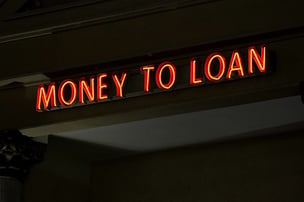U.S. legislators are currently working to rollback some of the banking and lending restrictions put in place by the Dodd-Frank Act, passed in the wake of the financial crisis. Included in those revisions are potential changes to the High Volatility Commercial Real Estate Loans (HVCRE) rule.
With all of that in mind, let’s take a look at High Volatility Commercial Real Estate Loans, a critical element impacting commercial real estate lending.
What is the HVCRE rule?
HVCRE loans include credit facilities used to finance the acquisition, development, or construction of real property. However, some exceptions apply, including:
-
One-to-four-family residential properties
-
Community development loans
-
The purchase or development of certain agricultural land
-
Other commercial real estate projects in which the loan-to-value (LTV) ratio is less than a supervisory ratio established by bank regulators, and the borrower has contributed equity of at least 15 percent of the appraised “as completed” value
Under the HVCRE rules, loans designated as high volatility commercial real estate require lending banks to maintain additional capital reserves. Banks are required to reserve more capital for loans categorized as HVCRE.
“This makes it much more restrictive for the borrower in terms of how aggressive banks can be,” says Bronson Naab, Vice President - Commercial Real Estate Relationship Manager with National Bank of Arizona.
These loans carry a 150% risk weight, meaning banks must reserve $1.50 per $1.00 of credit in these situations.
 Why does the HVCRE rule exist?
Why does the HVCRE rule exist?
Shortly after the financial crisis of 2007-2008, the idea of classifying certain loans began to gain traction. The Basel Committee on Banking Supervision was in the process of updating its bank capital requirements. Based on those recommendations and the financial downturn, the U.S. government implemented the Dodd-Frank Act.
In creating this legislation and developing certain loan regulations, regulators deemed certain commercial loans to be riskier than other types. It was a means by which to protect financial institutions from potential losses from failed construction loans.
How it impacts the commercial real estate sector?
In recent years, banks wary of taking on construction risk have:
-
Lowered leverage
-
Increased rates
-
Applied more conservative underwriting
-
Become more selective on borrowers and deals
The consequence of increased capital requirements means less incentive to provide financing for commercial development projects. It also means an increased price tag on construction loans.
Considering banks have become more selective, they’ve raised rates slightly, with pricing that’s about 50 to 100 basis points higher than several years ago.
“These rules aren’t necessarily a huge deterrent in the broad scheme of things, but certain specific build to suit, investment-grade type of assets is where borrowers are affected the most,” says Naab.
In addition to exclusivity, one of the biggest challenges for lenders has been determining what qualifies as HVCRE and if these rules are truly solving the lending concerns.
“The way the rules are written doesn’t seem to solve the problem of a high leverage loan,” says Naab. “If they were trying to solve this problem, they should have made the criteria based on actual cost.”
Discussion and efforts continue in the potential reform of Dodd-Frank regulations, and lawmakers continue to try to smooth out the inherent wrinkles in the HVCRE rule. In the meantime, the CRE and lending communities eagerly await.







